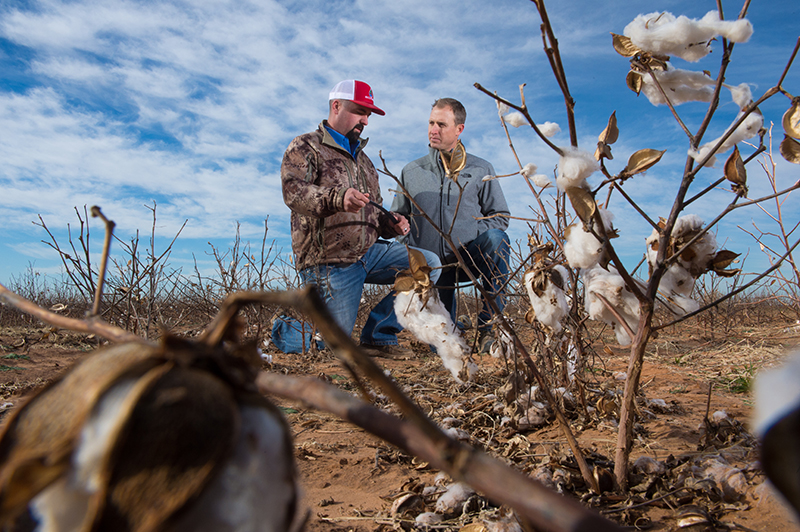Making Money With Manure

The old adage, “He fell in a pile of it and came out smelling like a rose” is very apropos right now for ag retailers who offer manure application services. The skyrocketing price of commercial fertilizer has driven demand for manure to unprecedented levels as producers seek ways to cut their input costs while meeting crop nutrient needs. Ag retailers who’ve fallen into it are enjoying the sweet, rosy smell of profit.
As more and more growers seek alternatives to commercial fertilizer, there is potential for more service providers to enter the manure application market. In addition, environmental considerations which limit the amount of manure applied per acre, as well as efforts which may limit application to spring only, could require more applicators in order to meet market needs.
However, making money in the manure application business isn’t as simple as one might think. It has become highly sophisticated, involving advanced technologies, high-tech equipment, discriminating farm operators, careful attention to detail, and a thorough understanding of environmental rules and regulations.
Midwest Farmers Cooperative (MFC) in Sheldon, IA, ventured into manure application in the late 1970s after a less than satisfactory experience with custom applicators who spread manure from the co-op’s 4,000-head beef confinement operation.
The decision was led by Larry Den Hartog, who is now the agronomy operations manager.
“At that time, manure was a waste product they just wanted to get rid of. The manure applicators were taking up to two weeks and were giving our manure a bad name,” Den Hartog remembers. “Hog units were beginning to expand rapidly, and I expected we would begin to lose fertilizer business. We got into manure application to handle manure from the feedlot, generate service income, and protect our fertilizer business.
“We started with one machine, and by fall, we had so much business, we purchased a second TerraGator,” he continues. The application fleet currently includes two TerraGator NMS 9105s equipped with 23-foot toolbars and a TerraGator NMS 9205 with a 30-foot bar.
Poultry Litter Began As ‘Waste’
More than a decade ago when VanTilburg Farms — a family farming, crop production, and excavation company, first applied manure to its own fields, poultry litter was simply a waste product to be gotten rid of. Livestock operations in the southern half of Mercer County, located in the Grand Lake/Lake St. Mary’s watershed, were to the limits of what they could apply and needed somewhere else to go with litter.
At the suggestion of Joe Beiler, the local Extension agent, VanTilburg Farms began using poultry litter as a nutrient source for crops on their 4,000-acre operation near Celina, OH. With experience on their farm and requests for poultry litter coming from customers, VanTilburg Farms started offering custom application in 1999. Today, VanTilburg’s phone is ringing off the hook with calls from growers who want to buy poultry litter. It has become a high-demand alternative to commercial fertilizer, and VanTilburg is “essentially sold out.
“Demand for poultry litter is going way up, outpacing supply, and the price has gone up as well,” VanTilburg says. “I believe the price will go up considerably for next year as well.”
More Than Application
Today, MFC manure application services are a component of the company’s agronomy program and include soil testing, nutrient management planning, as-applied maps, manure nutrient analysis, tendering to the field, manure procurement, application, and a complete report following application. This comprehensive approach to the business keeps the phone ringing even though MFC is the most expensive applicator in the area.
The co-op charges a minimum of $61.20 per acre up to 3,600 gallons per acre, which covers the full spectrum of application-related services. For more than 3,600 gallons, rates increase 17 cents per gallon per acre. Tendering to the Frac tank is in addition at $7.50 for 2,800 gallons hauled 3 miles. Each additional mile is one-tenth cent per gallon.
VanTilburg Farms generates income through brokering litter and through custom application. Like MFC, its service includes grid soil sampling, nutrient management planning, litter tendering, and application. Beiler, who helped them get started, is now a full-time employee, responsible for procuring litter from a 70-mile radius, handling the soil sampling on 2.5-acre grids, keeping abreast of Ohio Department of Agriculture rules and regulations as well as all needed paperwork.
Depending on distance from the poultry barns, growers are charged approximately $40 per ton for a typical application of 3 tons per acre which covers tendering and application. Application only is $8.50 per ton. The operation also makes a markup on the litter it brokers.
Equipment Important
Litter application wasn’t always smooth sailing for VanTilburgs Farms. Finding the right spreader system took four tries.
“We started with a regular dry fertilizer spinner box, but that didn’t work well at all, particularly for large volumes because the gate hole was too small, and the manure would bridge up, plus the box would not hold enough volume,” VanTilburg says. “We went to a Hydra-Spread next, but to apply 3 tons, we had to drive really fast. The spread pattern wasn’t very accurate, and the machine didn’t have the capacity we needed.”
Spreader No. 3 still posed problems with wet litter or straw bridging up, and it had a narrow spread pattern. For some applications it worked, for others, it didn’t. The company then turned to a Tebbe box on a TerraGator 3104 chassis which handles the manure well and provides a wide, even spread pattern.
“Farmers like to see a consistent application pattern across the entire field, and the consistency of this applicator has helped us establish our business,” VanTilburg says. “The spread pattern also helps the litter dry quickly, which is important to being a good neighbor and helps us maintain our business.”
Annually, the company applies around 50,000 tons of litter, serving operations in a 60- to 70-mile radius and running around the clock during the busy fall application season. To make this process easier for the operator, the machine is equipped with an autosteer guidance system. Litter is stockpiled 300 feet from the edge of the field and loaded with a pay loader. An application rate of 60 tons to 70 tons per hour is a top pace.
Moving Manure ‘Through The Knives’
In Den Hartog’s experience, the only way to make money in the manure application business is to “have manure moving through the knives.” To make this Northwest Iowa operation work, Den Hartog’s goal is to apply 1 million gallons of liquid swine or cattle manure per day with a 50-million-gallon-per-year goal. He knows the first 27 days of application generate no profit — only cover his expenses. Each day, the company must apply 750,000 gallons to cover expenses.
To meet these aggressive goals, having the right equipment and “a heck of a crew” is key. On a good day, the MFC team will make the 1-million-gallon target using three TerraGator NMS machines tendered from field-side Frac tanks. Semi-tankers haul from barns where a tractor and pump is working in every pumpout station — sometimes six per building.
To stay ahead of three applicators, tankers must haul 100,000 gallons per hour. Depending on the distance to the field, as many as 10 tankers may be in use at one time. High speed pumps allow them to offload in as little as three minutes.
“The operation is labor intensive, but it has to be since you don’t make money when the applicators are sitting. We have a heck of a crew that often runs from 5:30 a.m. to 10 p.m.,” Hartog says.
Precision Approach From Pit To Field
The operation is much more than pump, haul, and spread; precision application is an approach which delivers “extra value” and allows MFC to be at the top of the market on application charges.
Tyler Jorgensen, a dedicated full-time precision agriculture and manure management specialist, joined the team in 2005 and is responsible for lining up grid soil sampling, manure sampling, and developing manure management plans, including running a Russell II and the newly instituted phosphorus index.
MFC has found the nutrient analysis of manure varies because rations and barn management vary. Rather than relying on a standard analysis, manure samples are taken from each barn prior to spreading as well as at the field during spreading. A database of sampling results is kept on file for DNR documentation and nutrient management planning. In addition, it is used to more closely match nutrient content to nutrient needs of each field.
The company believes thorough agitation is critical for uniform application of nutrients at the field and for good removal of solids in the pits. If not agitated properly, a variation of as much as 20 units of nitrogen (N) has been seen from the top to the bottom of a pit in Den Hartog’s experience.
With soil test results, manure nutrient content, and often yield maps in hand, an application rate is determined for each field. Most often, rates are based on the nitrogen content. Many of the swine in the area are fed phytase to reduce phosphorus in manure below what is needed for a two-year corn/bean rotation. On a field allowed 180 units of N, MFC will typically apply enough gallons to supply 150 units.
The additional 30 or 40 units of N needed are often applied in the spring with preemergence chemicals, to jumpstart the crop. Using the Falcon controller in the TerraGator, the operator calibrates each load to apply the appropriate rate.
“Once the machine is out of manure, the map won’t print, so the operator has to lift the toolbar and go get more manure,” Hartog explains. By combining as-applied maps, grid maps, and yield maps, the fertility experts at MFC also have the opportunity to push manure application rates higher based on proven crop removal rate. Using these tools they often go over the field again to variable-rate apply phosphorus, potash, lime, zinc, and sulfur — generating more service income for the coop and helping growers push yields to optimal levels.
VanTilburg points out that success in the manure application business also requires staying on top of environmental regulations and being a good neighbor. Talking to neighbors before spreading, being cognizant of wind direction, and treating litter for the black beetles typical in layer houses are their standard practices






